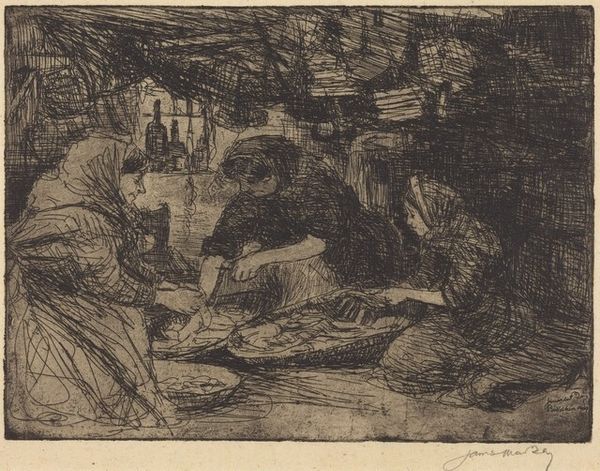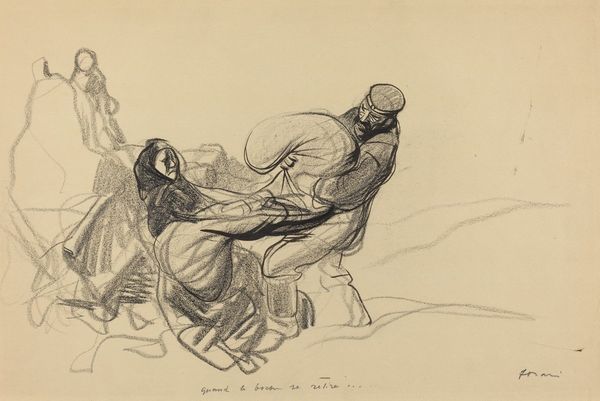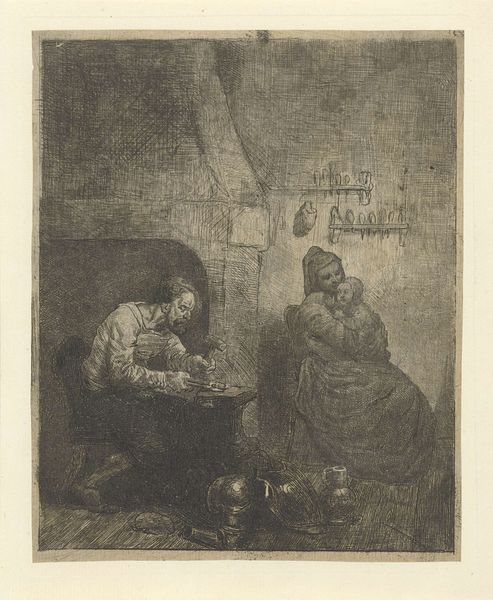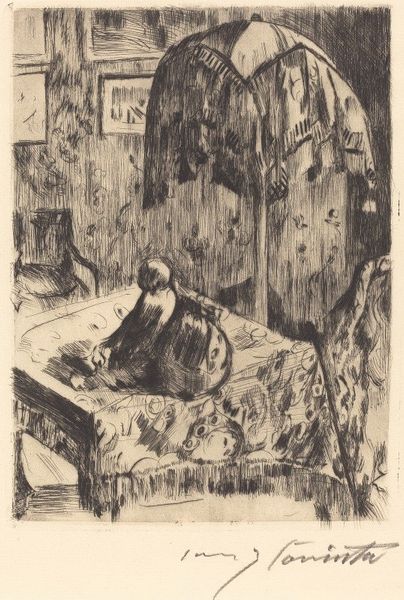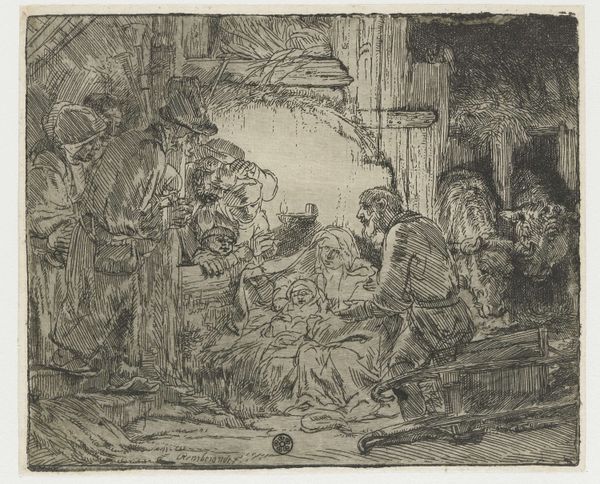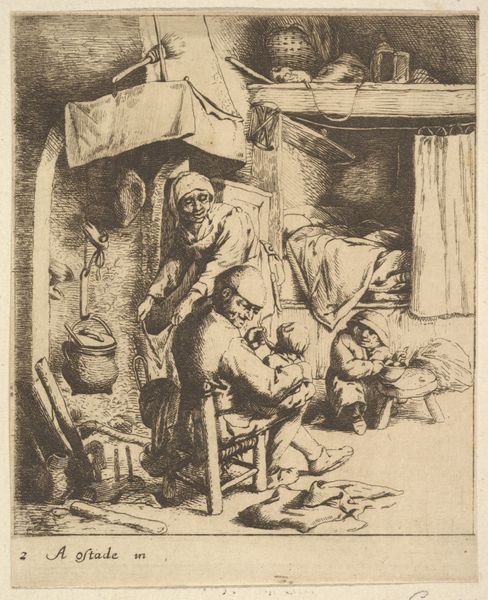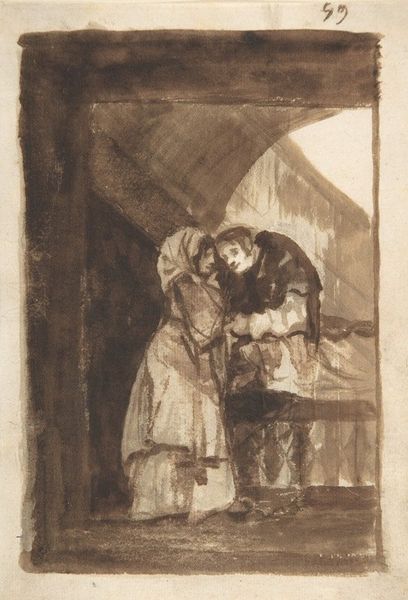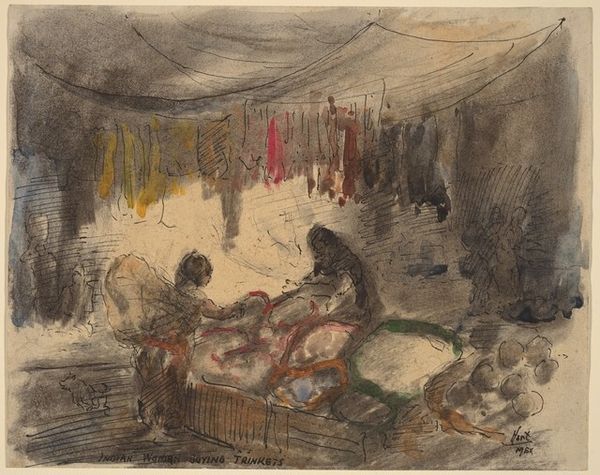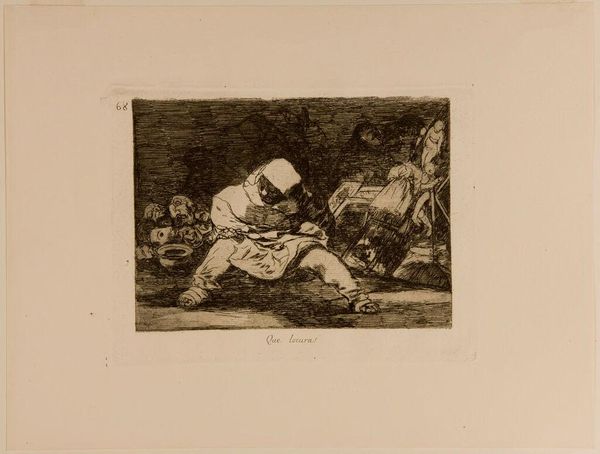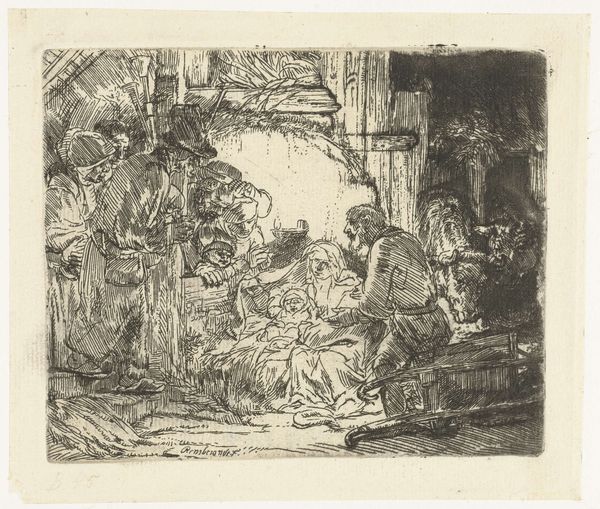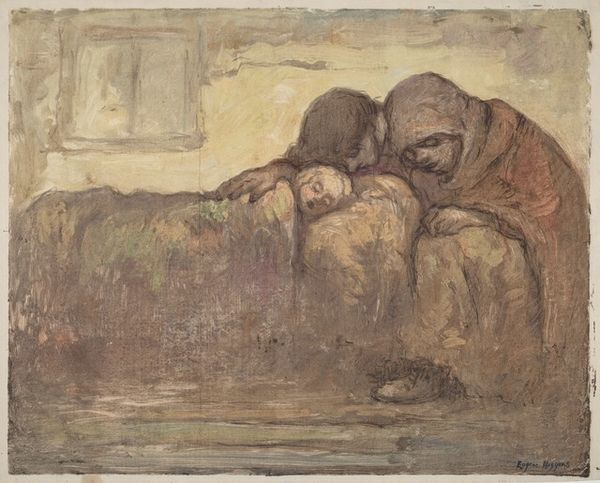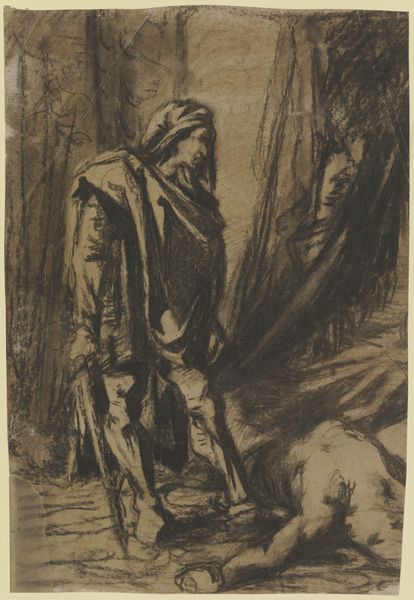
drawing, print, charcoal, pastel
#
portrait
#
drawing
# print
#
charcoal drawing
#
genre-painting
#
charcoal
#
pastel
#
modernism
#
realism
Dimensions: plate: 12.5 × 17.5 cm (4 15/16 × 6 7/8 in.)
Copyright: National Gallery of Art: CC0 1.0
Curator: We are looking at "Poking the Fire," a drawing from 1935 by Eugene Higgins, likely rendered in charcoal and pastel. What's your immediate reaction to the piece? Editor: Gloom. The palette feels limited, almost sepia-toned, evoking a sense of hardship. Is that a peasant woman hunched over a meager fire? There’s something undeniably somber here. Curator: Precisely. Observe how Higgins deploys value contrast – the darker tones coalesce around the figures and background, throwing into stark relief the almost rudimentary strokes defining her posture and clothing. The application itself, that frenetic energy in the strokes, builds the affect. Editor: Absolutely. Fire, throughout art history, symbolizes not only warmth and sustenance, but also domesticity, safety, and often divine presence. Here, the fire feels weak and the woman’s hunched posture speaks of weary labor. One thinks of similar representations of the rural poor by Millet. There is an echo of social commentary here. Curator: Certainly, thematically there is that dialogue, but Higgins diverges stylistically. Look at the flatness of the background; there’s an intentional ambiguity and lack of specific detail, focusing instead on texture and form. The stool on which the woman sits appears almost crudely represented and her form, simplified. It's realism mediated by modernist visual strategies. Editor: I'm drawn to the obscured face. That anonymity almost elevates her into an archetype—a symbol of the downtrodden. The downcast eyes reinforce the sense of resignation, which contrasts with the active verb of the title: poking the fire. The visual weight is on stillness and the symbolic potential of flickering hope struggling against the odds. Curator: That's it entirely. Consider the composition: the triangular arrangement of the woman, the fire, and what seems to be a cauldron; a unified geometry, if you will, disrupted only by the textured daubs, which speak to material desperation. Editor: It's a compelling union of form and iconographic messaging—simultaneously intimate and universally resonant, conveying the quiet desperation of poverty. It prompts reflection, doesn’t it? Curator: Yes, quite, a study in effective austerity in the vocabulary and language of art making.
Comments
No comments
Be the first to comment and join the conversation on the ultimate creative platform.
